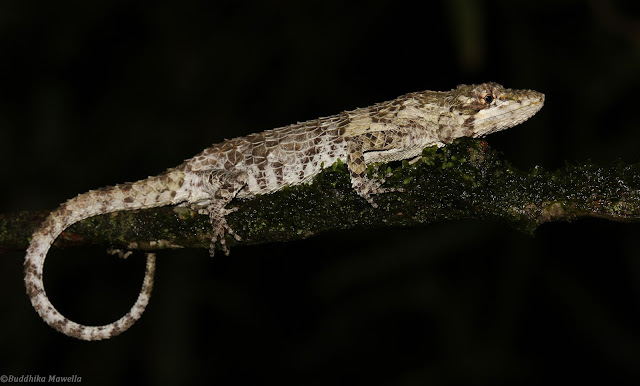English : Green vine snake
Binomial name : Ahaetulla nasuta
Sinhala : ඇහැටුල්ලා / ඇස්ගුල්ලා
Binomial name : Ahaetulla nasuta
Sinhala : ඇහැටුල්ලා / ඇස්ගුල්ලා
Green vine snake is a mildly venomous reptile living in all environmental regions of Sri Lanka except montane zones elevation above the sea level is greater than 1000 meters. Most of the time this snake can be seen on trees or shrubs. They have a green color body as an adaptation for arboreal life. Their female snakes give birth to young instead of laying eggs. There is a folk story among Sri Lankan people that this snake pull out human eyes using its pointed head when threatened, which is not true. A.nasuta feed on lizards and frogs.















































